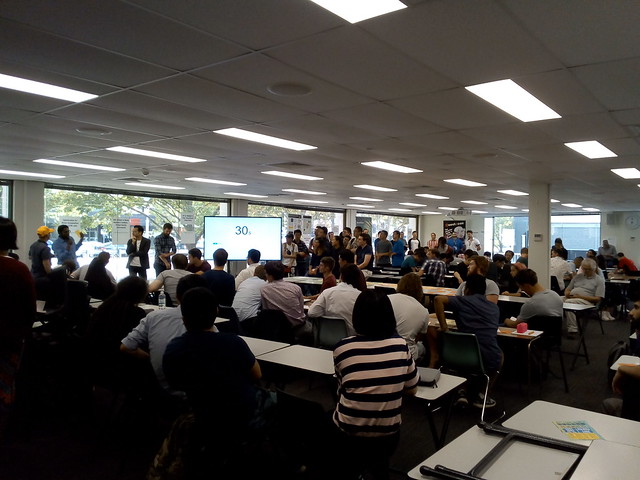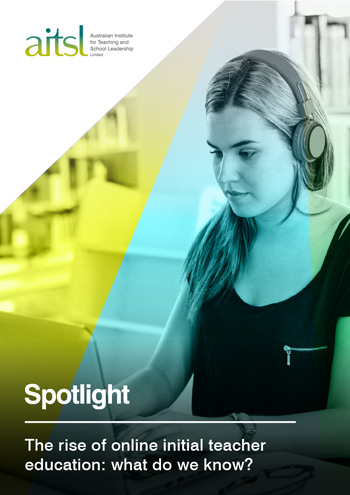The Australian Senate Committee on the Future of Work and Workers has invited me to speak to them on Monday at 2:10pm. The program for the day runs from 9am to 5pm:
9.00 am PlanDoThe committee has my short written submission. Committees usually don't want formal presentations, but I thought I would prepare one just in case:
9.40 am Dementia Australia
10.20 am Break
10.35 am The Group of Eight
11.15 am Volunteering Australia
Australian Internships
11.55 am Department of Human Services
Department of Social Services
12.35 pm Lunch
1.30 pm The Australian National University
Professor Peter Whiteford
2.10 pm Australian Information Industry Association & Attachment 1
Mr Tom Worthington
2.50 pm Break
3.05 pm Australian Bureau of Statistics
Productivity Commission
3.55 pm Department of Jobs and Small Business
Department of Industry, Innovation and Science
Department of Education and Training
5.00 pm Adjournment
Educating the Future Workforce
Tom Worthington, The Higher Education Whisperer
Submission to the Senate Select Committee on the Future of Work and Workers
2:10pm, Monday 4 June 2018, Senate Hearing Room 2S1
Education for a more flexible workforce
Australia needs an education system which is short sharp and mobile.For inquiry on the impact of technological and other change on the future of work and workers in Australia1, reference “6. any related matters”.
Strengthen VET
Students should be able to complete a VET qualification at secondary school, go on to further study in the VET system (while working part-time) and then to university.Make University More Flexible
- Encourage universities to offer nested, standardized programs which offer sub-degree entry and exit points.
- Students should be able to start with a sub-degree program and then continue their studies for a degree.
- Policy needs to recognize that most university students now studying on-line so they can work at the same time.
Teacher's Computing Skills
Teachers teaching computing should be fully, formally, dual qualified in computing and teaching. Australia already has better systems for doing this than the UK.
STEM Subjects Addressing Real Issues
STEM student projects on real world issues, such as climate change. This requires, project based work addressing issues
Innovation and hacking competitions for school and higher education.
On-line Nested University Programs
- Sub-degree entry and exit points
- Flexibility to study off-campus.
Soft skills
Soft skills through courses and project work. Example: ANU's "TechLauncher program
Train University Academics to Teach
Academics need formal teaching qualifications.
Training is needed to be able to use RPL, RCL, e-portfolios and other tools.
See Also
- Inquiry Into the impact of technological and other change on the future of work and workersSelect Committee on the Future of Work and Workers, Australian Senate https://www.aph.gov.au/Parliamentary_Business/Committees/Senate/Future_of_Work_and_Workers/FutureofWork
- Higher Education in Australia: Short Sharp and Mobile, Higher Education Whisperer, March 19, 2018 http://blog.highereducationwhisperer.com/2018/02/higher-education-in-australia-short.html
- ICT Sustainability: Assessment and Strategies for a Low Carbon Future, Tom Worthington, 2018 http://www.tomw.net.au/ict_sustainability/introduction.shtml
- Canberra Start-up Business Boomerang, Tom Worthington, 2017 http://www.tomw.net.au/digital_teaching/instructional_design.shtml#cbb
- TechLauncher, ANU College of Engineering & Computer Science https://cs.anu.edu.au/TechLauncher/
- ANU Project Bootcamp with Lego and User Centered Process, Higher Education Whisperer, February 25, 2018 http://blog.highereducationwhisperer.com/2018/02/anu-project-bootcamp-with-lego-and-user.html
- Introduce Teaching as a Specialization for Computer Professionals, Higher Education Whisperer, January 10, 2017 http://blog.highereducationwhisperer.com/2017/01/introduce-teaching-as-specialization.html
Educating the Future Workforce
Speaking Notes
Tom Worthington, MEd FHEA FACS CP
Good afternoon, I am a computer and educational technology consultant. As an Honorary Senior Lecturer in Computer Science at the Australian National University I teach computer professionals in skills for and with computers. As a member of the Professional Education Governance Committee of the Australian Computer Society I help set the education standards for future professionals. ANU and ACS have made submissions to this inquiry, but my views here as an individual interested in education for work.
It is generally agreed that technology will
eliminate many jobs. Workers will need better soft and technical skills,
plus retraining for multiple careers.
The Australian education system already allows for work-ready learning across
schools, VET and university. Some minor adjustments can make the system
more flexible.
- Strengthen the VET system and have it blended with secondary schooling at the lower end and university at the upper end. Students should be able to complete a VET qualification at secondary school, go on to further study in the VET system (while working part-time) and then to university, still while working.
- Make the university system more flexible. We need to encourage universities to offer nested, standardized programs which offer sub-degree entry and exit points. Students should be able to start with a sub-degree program and then continue their studies for a degree. Most university courses are already blended, but government policy and university practice needs to recognize that most university students now, in effect, studying on-line so they can work at the same time.
- Rather than focusing on traditional campus based three years university degrees, I suggest policy should prioritize on-line, nested, programs which offer sub-degree entry and exit points, with the flexibility to study off-campus.
- Soft skills can be addressed in specific university courses and in project work. Soft skills figure prominently in the ANU's "TechLauncher5 program of group project work for STEM students. Techlauncher students undertake team building exercises and have mentors, tutors and clients with industry experience. Some of this looks like fun, where students play with Lego, but there is also a lot of hard work on team and client relationship skills.
- In addition, we need teachers in schools, VET and university, who have training and formal qualifications in how to teach these skills. This is particularly a problem in universities where academic staff have higher research degrees, but minimal teacher training. Academics need formal teaching qualifications.











